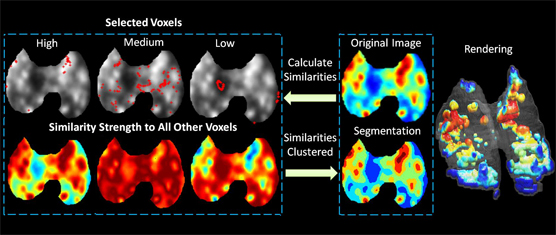Brent Foster, Ulas Bagci, Ziyue Xu, Bappaditya Dey, Brian Luna, William Bishai, Sanjay Jain, Daniel J. Mollura. The National Institutes of Health and Johns Hopkins University of Medicine.
Volume: 61, Issue: 3, Page: 711-724

Pulmonary infections often cause spatially diffuse and multifocal radiotracer uptake in positron emission tomography (PET) images, which makes accurate quantification of the disease extent challenging. Image segmentation plays a vital role in quantifying uptake due to distributed nature of immuno-pathology and associated metabolic activities in pulmonary infection, specifically tuberculosis (TB). For this task, thresholding-based segmentation methods may be better suited over other methods; however, performance of the thresholding-based methods depend on the selection of thresholding parameters, which are often suboptimal. Several optimal thresholding techniques have been proposed in the literature, but there is currently no consensus on how to determine the optimal threshold for precise identification of spatially diffuse and multi-focal radiotracer uptake. In this study, we propose a method to select optimal thresholding levels by utilizing a novel intensity affinity metric within the Affinity Propagation clustering framework. We tested the proposed method against 70 longitudinal PET images of rabbits infected with TB. The overall dice similarity coefficient (DSC) between the segmentation from the proposed method and two expert segmentations was found to be 91.25±8.01% with a sensitivity of 88.0±12.59% and a specificity of 96.01±9.20%. High accuracy and heightened efficiency of our proposed method, as compared to other PET image segmentation methods, were reported with various quantification metrics.

